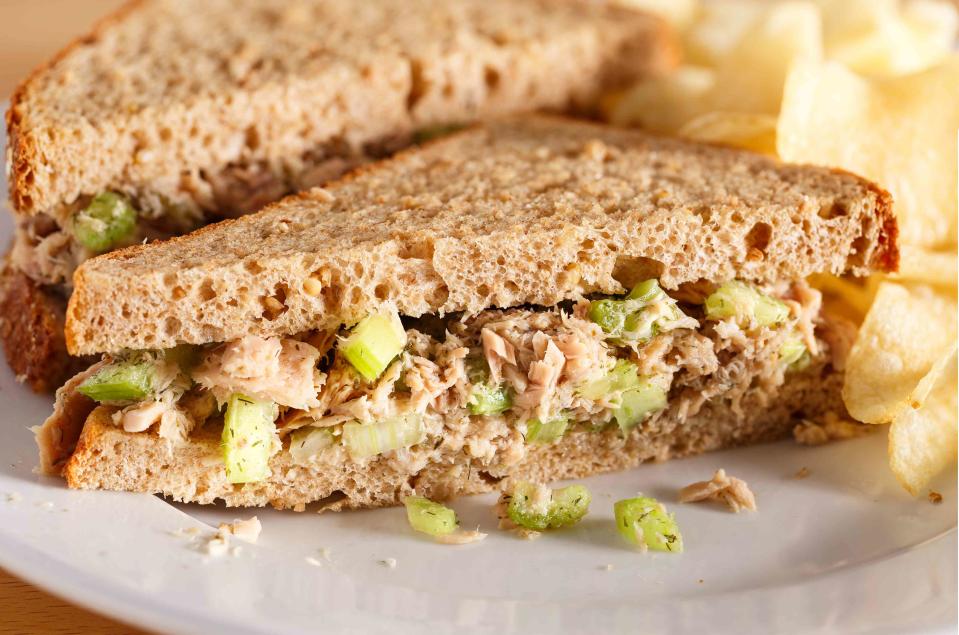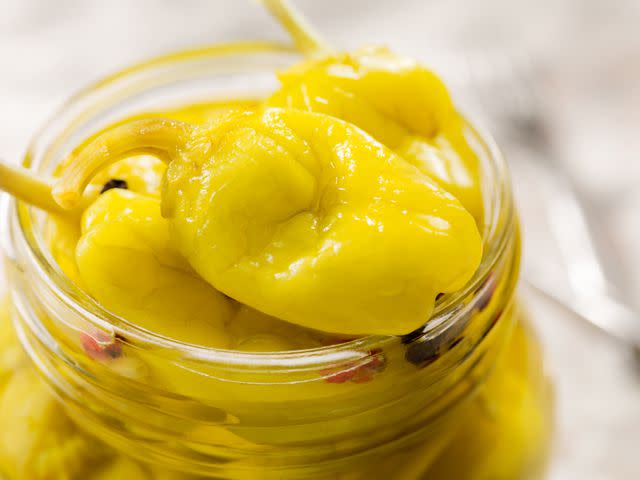My 1-Ingredient Upgrade for Better Tuna Salad—It's Delicious
It's probably already in the door of your fridge.

Simply Recipes / Adobe Stock
Tuna salad is a staple that I've been making forever. It's a lunchtime classic and a reliable crowd-pleaser when I need a quick, family-friendly meal. Over the years, I’ve found a simple pantry ingredient that takes the standard tuna salad up a notch: pepperoncini peppers.
I use these vibrant peppers regularly to add zest and acidity to meals, like salads, pepperoni, chicken, or veggie pizzas, and almost any savory sandwich. They're bright and tangy with a subtle heat, and the peppers and their brine add bold flavor and a nuanced zing wherever they're added.
If that sounds appealing but you haven't tried pepperoncini before, have no doubt that you'll quickly find other ways to use up the jar.
How To Make My Pepperoncini Tuna Salad
I like water-packed tuna instead of oil-packed, preferring to add richness to my tuna salad with mayo. For one can of tuna, I typically use about a quarter cup of mayonnaise, a tablespoon of finely chopped scallions or red onion, one-half to one teaspoon of Dijon mustard, a generous sprinkle of salt and freshly ground pepper, and one to two tablespoons of finely sliced pepperoncini peppers.
The peppers add a welcome contrast to the creamy richness of the mayonnaise and are an upbeat partner to the tuna itself. These measurements are just a guide to help with ratios; you can easily eyeball it and adjust everything to taste.
Some key tips to keep in mind:
If it's too dry, add more mayo.
If it tastes flat, add more mustard or a splash of pepperoncini brine. My kids will eat this tuna salad with the pepperoncini peppers, but I'll often add more if they aren't around.
When fresh herbs are available, I'll never say no to a sprinkle of finely chopped dill or parsley.
I like serving this on slices of fresh sourdough or a hearty multigrain, but I've also been known to use any leftovers as a "dip" for fresh, crunchy vegetables like celery.

Simply Recipes / Getty Images
Tips for Buying the Best Canned Tuna
I try to stock up on sustainably sourced tuna wherever I can find it when it's on sale, but Target's premium skipjack from its Good & Gather brand is always available at a fair price. ALDI also has some parameters to guide better sustainability practices, but you should dig deeper into each can's labels to know for sure.
For example, for a long time, I thought the terms "wild-caught" and "dolphin-safe" meant that the tuna was sustainable. Sadly, that's just marketing lingo. Wild-caught tuna is actually listed as a product to avoid by organizations like Seafood Watch and the Marine Stewardship Council (MSC). According to the MSC, one of the most trusted sources on wild fish and seafood sustainability, "most tuna species have nothing to do with dolphins."
The terms dolphin-safe or dolphin-friendly only mean that the tuna comes from boats that don't interact with dolphins. The blue MSC label, by contrast, takes into account impacts on the wider marine environment as well as the species in it.
If you're trying to buy more sustainably sourced fish and seafood, you can look for an easy-to-spot blue checkmark indicating that it’s MSC-certified. Or you can search the label for terms like “troll-caught," "pole-caught," "pole-&-line-caught," "FAD-free," "free school," or "school-caught.”
Ultimately, we're all doing our best to put good, nutritious food on the table for our families. So, no matter which tuna makes it into your kitchen, a kick of pepperoncini will always take it to the next level.
Read the original article on Simply Recipes.


